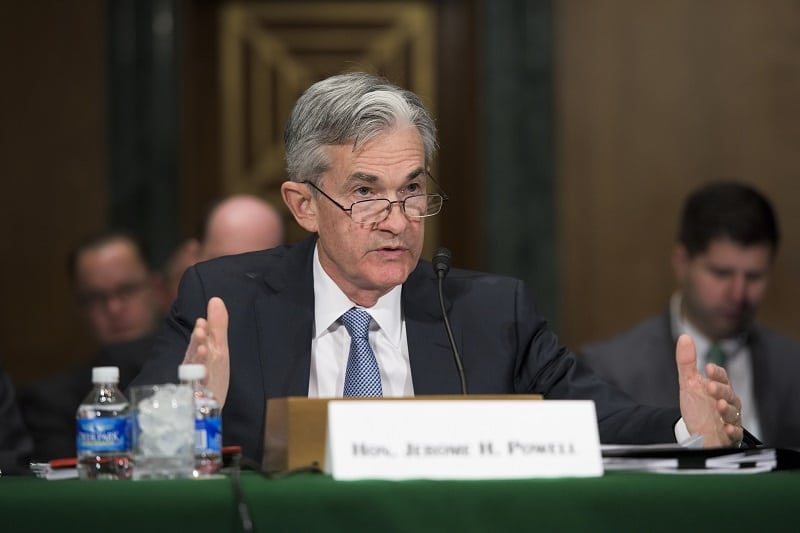Central bankers are set to meet virtually on Thursday at the Federal Reserve’s annual Jackson Hole economic symposium in Wyoming and investors will be looking for signs that the central bank has learned lessons from 2013’s hazardous taper tantrum.
This year’s theme will tackle macroeconomic policy in an uneven economy, but the primary concern for investors lies with the Fed’s approach to tapering – a cut back on quantitative easing measures the US central bank adopted during the pandemic.
With Fed chairman Jay Powell (pictured) set to give a speech on Friday, Validus Risk Management head of interest rate trading Shane O’ Neill is uncertain about the central bank’s ability to avoid a repeat of 2013’s taper tantrum given the uncertain backdrop.
“A global pandemic, the likes of which we have never seen has caused unprecedented economic headwinds,” says O’ Neill. “US inflation is back above levels not seen since the early 1990s and years of easy money have equities producing record highs every day. In this setting, the markets are trusting the Fed to achieve a goal it has proven itself incapable of twice in recent memory.”
‘The best a borrower can hope for is a calm market’
The phrase ‘tapering’ entered the market vocabulary in late May 2013, when then Fed chairman Ben Bernanke signalled that the central bank was considering slowing the monthly treasury purchases.
O’Neill says that the market was “not prepared” then and as a result, years of easy money saw equities rise, rates fall and tight trading ranges become the norm in many asset classes.
“The markets may be better prepared this time, there may be no hidden effects waiting to spook us, but the risk seems skewed,” he says. “The best a borrower can hope for is a calm market. There are few arguments that tapering will directly lead to lower rates, and the worst-case scenario is a repeat of 2013 or 2019.”
No clear-cut answer to direction of treasury yields
For Brooks Macdonald investment strategist Matthew Cady at the outlook for US treasury yields is not simple for investors.
“Markets are trying to work out what will happen to US treasury yields when the Fed starts to taper, but unfortunately for investors, there is no clear-cut answer.”
Currently the US Federal Reserve is buying $120bn (£87bn) a month across treasuries and $40bn a month in mortgage-backed securities. Cady says if the Fed starts to taper there is an “impetus” for the price to fall and yields to rise.
He says the bottom line for investors is that the direction for bond yields when the Fed starts to taper is not a “foregone conclusion”.
“The expected Fed taper is another reason why this year continues to be a year of transition for both markets and economies and as such reiterates the argument for keeping balance in investor portfolios,” he adds.
Fed’s monetary policy is currently too accommodating
JP Morgan Asset Management global market strategist Hugh Gimber says that the current stance of monetary policy looks “too accommodative”.
“With the recovery making strong progress and the labour market gathering steam, the US economy no longer needs the same amount of support,” says Gimber.
“Equity markets continue to cheer the amount of liquidity in the system, but the Fed will not be blind to the longer-term risks of policy that is too supportive for too long.”
Although investor’s minds are quick to return to 2013’s taper tantrum, Gimber says there are “fewer reasons for concern” this time round.
“The withdrawal of support is always a bumpy time for markets, but the Fed is only set to normalise policy at a glacial pace for several quarters. Governments are less eager to tighten their fiscal belts post this crisis, if anything they are set on spending more.
“Even in the emerging markets – often the most sensitive region to tighter Fed policy – external vulnerabilities are far smaller today relative to 2013.”
Speed of tapering matters more than the start date
The market interpretation of the eventual announcement is more likely to be dictated by “how slowly purchases are unwound”, not whether they begin in November or December, adds Gimber.
“Several other central banks are now setting out plans for how they eventually intend to shrink their balance sheets,” he says. “While these decisions may still be some way away for the Fed, Powell’s remarks at Jackson Hole will also be closely scrutinised for any clues on how the Fed’s medium-term thinking on balance sheet management is evolving.”
GDIM investment manager and director Tom Sparke says that “next stimulative boosts” in terms of recovery and infrastructure plans are likely to be spread over longer timeframes so should not have an immediate effect.
“I think they will be careful not to spook the market by hinting at an imminent move to taper but if this remains the plan – to announce the taper toward the year’s end – they will be keen to make this clear,” he adds.











